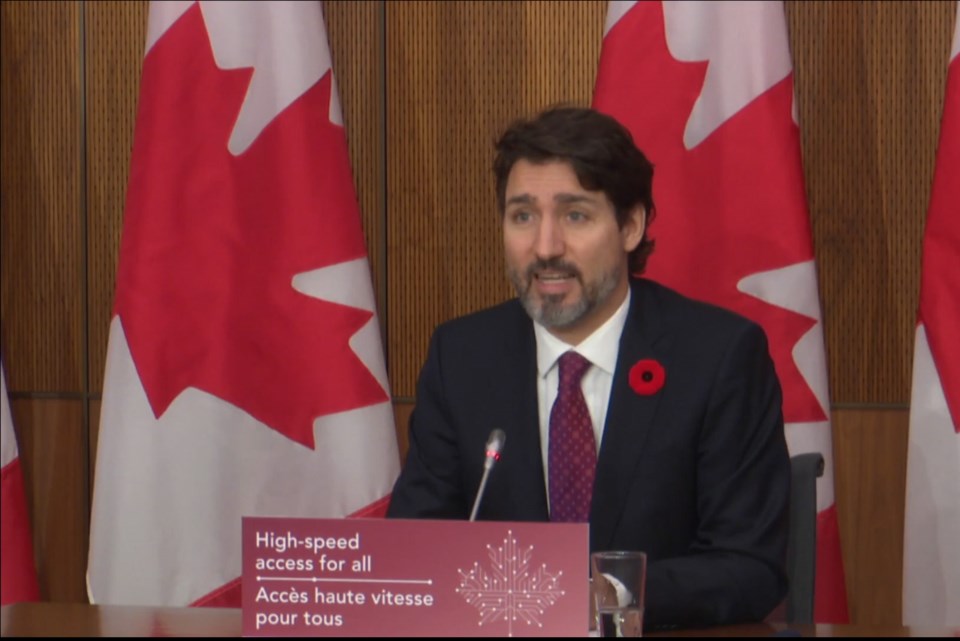The 80s may have wanted their MTV, but 2020s rural Canada wants their Wi-Fi. And the federal Liberal government is doing something about it, announcing a $1.75 billion program to improve connectivity, principally in rural areas of the country.
And in an era where Elon Musk’s SpaceX is developing a low-earth orbit constellation of satellites called Starlink to provide high-speed connectivity to rural areas around the world, accessible by consumers, the Canadian government is turning to a made-in-Canada solution, using Ottawa-based Telesat. Telesat’s model is to work with other providers to provide the consumer-facing product.
In a press conference in Ottawa, Prime Minister Trudeau said on Nov. 9, “Our government is launching the $1.75 billion universal broadband fund to connect all Canadians to high speed internet.
“This fund will be used to build infrastructure across the country, almost entirely in rural and remote communities. And for places that are just too far to reach, including in remote areas in the north, we've reached a $600 million agreement with Telesat for satellite capacity to improve broadband, along with the $2 billion we’ve already put down for broadband through the Canada infrastructure bank's growth plan. We're making real investments in Canadians, their success, and in their future.”
Trudeau continued, “Today's investment puts us on track to get 98 per cent of Canadians connected to high speed internet in the next few years, and everyone connected. a few years after that. These are ambitious targets, and we're ready to meet them. In fact, to accelerate our progress, right now, these need to succeed.”
Trudeau said his government had spent $6 billion over the last five years to connect 1.2 million households to highspeed internet, nearly 10 times the $700 million the previous Conservative government had spent.
The fund was boosted $750 million from the original $1 billion in the 2019 budget. The backgrounder provided by the government notes the strategy is to connect every Canadian by 2030. The strategy is to reach 98 per cent of the population by 2026.
Elements of the program include a “rapid response stream,” with up to $150 million allocated for projects that will be completed quickly and be in service by Nov. 15, 2021. For large-impact projects, the Canada Infrastructure Bank will be brought in as a partner for projects that are “transformative in terms of results and scope,” according to a backgrounder provided. There’s also funding for “a diversity of projects,” from “small ISPs (internet service providers), municipal-led projects, Indigenous projects, as well as projects from the larger ISPs.”
A further $50 million is included for mobility projects benefitting Indigenous peoples. This includes along highways and roads, as well as Indigenous communities.
The agreement with Telesat is to secure high-speed Internet capacity over Canada through the company’s low Earth orbit (LEO) satellite constellation. Telesat’s constellation will utilize next-generation technology to significantly improve connectivity in rural and remote Canada, including the far north. Telesat’s website says its LEO network is truly global, noting, “every point on earth is covered, including polar regions.”
The company plans on expanding its low earth orbit constellation to 298 satellites by 2023, with plans to build out its constellation to up to 1,600 satellites down the road to meet demand.
Under the agreement, the Government has committed up to $600 million to secure capacity on Ottawa-based Telesat’s LEO satellite constellation. This capacity will be made available to Internet service providers at a reduced rate in order to provide high-speed, reliable Internet access to the most challenging rural and remote communities in Canada, Telesat noted in a release.
“Telesat LEO will transform connectivity in Canada, and this agreement will bring affordable enterprise grade, high-speed connectivity to underserved Canadians no matter where they live and work,” said Dan Goldberg, Telesat’s president and CEO, in a press release on Nov. 9. “We applaud the Government of Canada and Innovation, Science and Economic Development Canada for leveraging revolutionary technologies like Telesat LEO to drive widespread social and economic benefits. We look forward to working with Canadian service providers to provide this capacity to qualified communities across the country to get all Canadians connected as soon as possible.”
Under the terms of the agreement, a dedicated pool of Telesat LEO rural connectivity capacity will be available to service providers at greatly reduced rates on a first come, first served basis to provide connectivity for eligible communities. With Telesat LEO’s high performance network capacity, service providers will offer broadband services to their end users of at least 50/10 Mbps speeds with unlimited data, and mobility service providers will offer LTE services.
“Telesat LEO will provide the reliable, secure, fibre-like broadband connections needed to bridge the digital divide in Canada, ensuring that Canadians living in rural and remote communities have access to affordable high-quality broadband that meets the Canadian Radio-television and Telecommunications Commission’s (CRTC) goal of at least 50 Mbps download, 10 Mbps upload speeds with unlimited data,” Telesat said.
Telesat was formerly a Crown corporation known as Telesat Canada. It privatized in 1998. It launched Canada’s first communications satellite in 1972.




